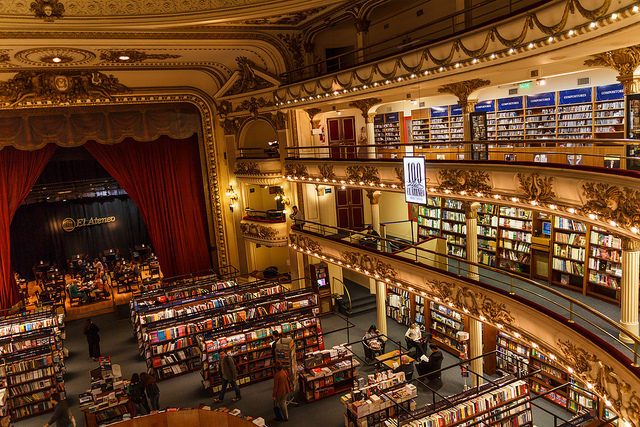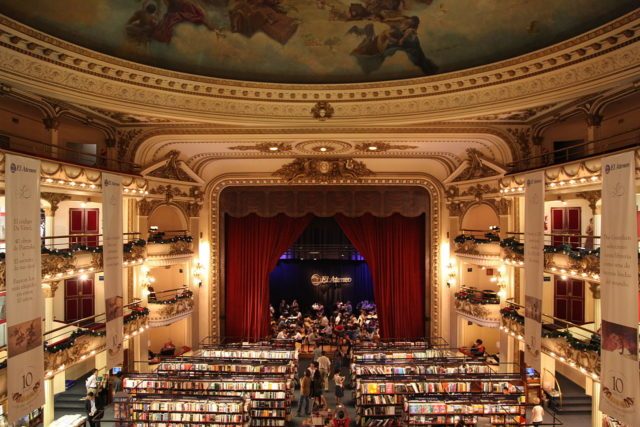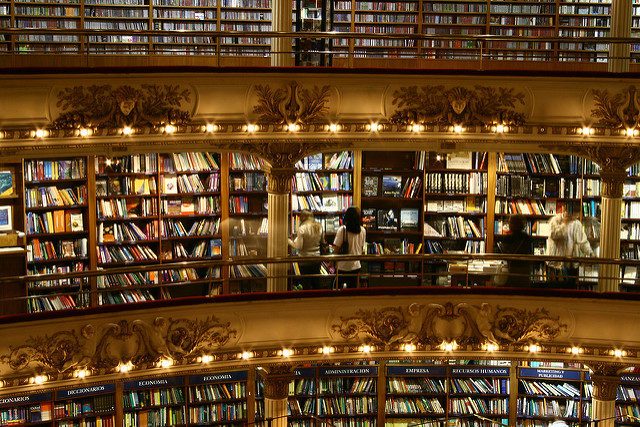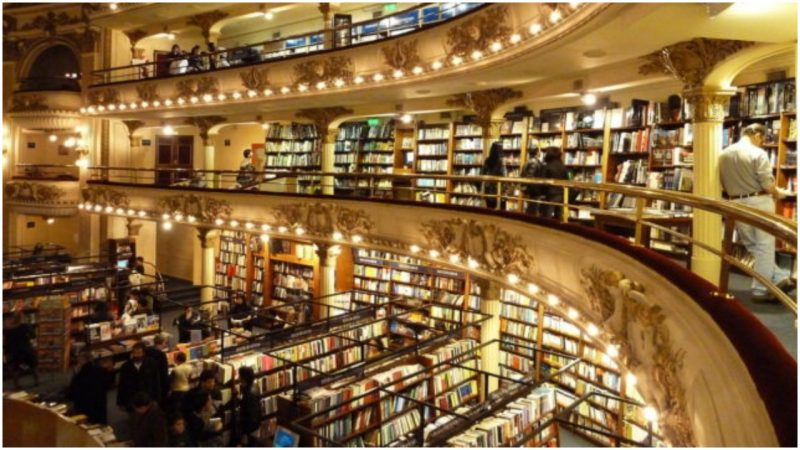Not many of us are familiar with the fact that Argentina’s capital, Buenos Aires, is the world’s leading city in its number of bookshops per capita. This study, conducted by the Worlds Cities Culture Forum, has brought to attention to Buenos Aires having a population of 2.8 million and around 735 bookstores, which sums up to about 25 bookshops for every 100,000 inhabitants. These figures and data could lead to a rough but reasonable conclusion that Argentinians are committed bookworms who indulge in the magical power of the written word. One of the reasons for this reading obsession is the myriad of European immigrants who swarmed into Buenos Aires in the 19th and 20th centuries and brought to the region cultural diversity.
This enriched the region literature, and soon assembled a culture of readers. According to the Guardian, at the time Buenos Aires published English, German, and Spanish-language newspapers, magazines, and literary publications. The importance of culture and education remains to this day and this is verified by the numerous impressive bookshops around the city. One is Ateneo Grand Splendid, Buenos Aires’ most popular and appealing bookstore, located at 1860 Santa Fe Avenue in Barrio Norte.
Ateneo Grand Splendid was founded in 1919 as a performing arts theatre. Its interior was a product of the imagination and skill of the architects Peró and Torres Armengol who implemented frescoes, painted by the Italian artist Nazareno Orlandi, on the building’s ceiling, depicting allegorical images of peace after World War 1. The hall is delicately trimmed, housing decorated theater boxes and balconies. In the past, this theater gathered the performers and aficionados of Argentina’s most recognizable cultural symbol–the tango.

Tango stars such as Roberto Firpo, Ignacio Corsini, and Carlos Gardel performed there and were strongly supported by the theater’s proprietor Max Glucksman–the owner of the record label Nacional-Odeon, today own by EMI, which published the best tango songwriters and musicians in the 1900s. Beside tango, the theater hosted ballet and opera and, in 1923, Grand Splendid established its own radio station: LR4 Radio Splendid.
In 1929, the theater was converted into a cinema that for the first time in Buenos Aires projected “talkies,” as well as silent movies. Gluckman tried hard to transmit the tango’s magic to the audience in order to preserve it in the cinema so he organized live orchestra performances of tango music as the soundtrack of the silent films.

Author: Phillip Capper, CC BY 2.0
The poor economy and maintenance issues over the following years led to a slow decay at the Grand Splendid but, luckily, in 2000 the retailer Grupo ILHSA S.A. gave the venue new life by turning it into a bookstore. Two years prior to this, the retailer acquired the very prestigious publishing house El Ateneo Librería y Editorial, founded by Pedro García in 1912 and known as a pioneer in publishing and book-selling in Argentina and in all Spanish speaking countries. The new owners of El Ateneo strove to preserve the publishing tradition of offering literature of high quality and cultivatef an audience of readers who would enjoy browsing, reading, and buying new books. The elegant, spacious venue of the Grand Splendid seemed like the right place for the embodiment of that vision.

The architect of the Al Ateneo Grand Splendid bookstore, Fernando Manzone, retained much of the venue’s initial 1920s interior decor and theater ambiance, providing a unique experience for visitors who can, at least for a moment, experience the spirit of a past era. The velvet crimson curtains surround the stage area, which is now converted into a cafe where visitors can relax and sip some coffee while reading, enjoying the live piano sounds in the background. All around the 21,000-square-foot show-room are comfy chairs that make book browsing pleasurable. Those who prefer a more quiet ambiance for reading can retreat into the old theater boxes. The upper floor offers periodical exhibitions, while the bottom floor is a children’s area filled with a myriad of children’s literature.

Author: Niels Mickers, CC BY 2.0

Author: Pablo Dodda, CC BY 2.0
In total, the store offers about 120,000 books, which include fiction, non-fiction, illustrated books, general reference, science, children books. and the editorial Al Ateneo that annually publishes 70 new titles. The commercial trade network covers all Hispanic countries. In 2008, the Guardian named El Ateneo Grand Splendid the second most beautiful bookshop in the world, a fact which has attracted many of the estimated one million customers per year.
Related story from us: Clementinum in Prague is considered the most beautiful library in the world
In addition, the Guardian suggests that Argentinians love to spend time looking for the perfect book in a store rather than just buying it online, and that this was confirmed by the business manager of the Grand Splendid bookshop, Antonio Dalto: “Argentinians still prefer to come in and browse for books. We have a website for selling books, but it only draws a small percentage of readers. As a matter of fact, they seem to use it more to select titles online, but then they come to buy the actual book here at the shop.”
